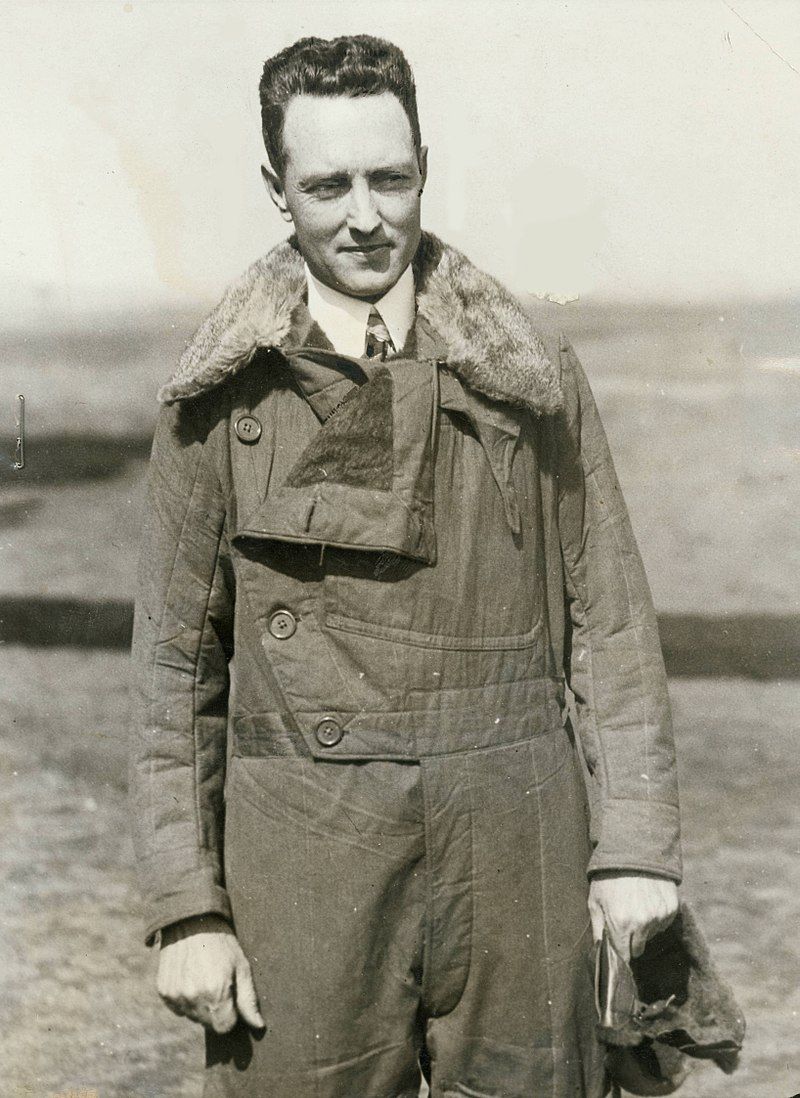Monuments
Rear Adm. Richard E. Byrd Monument - McMurdo Station
Rear Adm. Richard E. Byrd Monument - Wellington
Rear Adm. Richard E. Byrd Monument - Central Dunedin

Born in Winchester, Virginia, on October 25, 1888, Richard Evelyn Byrd, Jr., was the son of Richard Evelyn Byrd and Eleanor Bolling Flood Byrd. He was married to Marie Donaldson Ames Byrd. Richard Evelyn, Jr., attended the University of Virginia before entering the United States Naval Academy, graduating there in 1912. Because of a leg injury he received while captain of the academy gymnastics team, the Navy in 1915 determined that he was physically unable to serve, therefore he was forced to retire. Due to the United States' entry into World War I, he returned to serve in the Navy only this time with the aviation branch.
Richard Evelyn, Jr. was a naval aviator and explorer of both the Arctic and Antarctica who became famous in 1926 as the first man credited with flying to the North Pole. During World War I (1914–1918), he conducted antisubmarine patrols in the North Atlantic and became a pioneer in navigating long distances, both on water and in the air. Byrd’s desire to test navigational equipment in extreme climates took him to Greenland in 1925, and from there he pushed north using a sun compass and shortwave aerial radio transmissions. His roundtrip, aerial expedition to the North Pole, funded by wealthy American industrialists, was completed in about sixteen hours on May 9, 1926, and earned Byrd international fame. His pioneering feat has long been questioned, at times persuasively, by skeptical scientists who claimed that he could not have made the trip in such a short amount of time. Later in his career, Byrd established the United States' presence in Antarctica and flew to the South Pole.
Byrd spent the remainder of his career promoting aviation and exploration. He aimed to make the first nonstop flight from the United States to Europe, but Charles Lindbergh succeeded before he did. Byrd, however, with Balchen, Bert Acosta, and George Noville, flew the first transatlantic airmail to France on June 29, 1927, demonstrating the feasibility of commercial transatlantic flight by multiengine aircraft.
Byrd continued his polar explorations by leading an expedition to Antarctica in 1928. He, along with a crew of forty-two men, eighty-four sled dogs, two ships, and three airplanes, established a coastal base called Little America. As part of a four-man crew, he flew to the South Pole on November 28, 1929. The flight won him a Navy Cross and promotion to Rear Admiral. The expedition crew also discovered the northwestern portion of Antarctica, which Byrd named Marie Byrd Land in honor of his wife. He made a subsequent trip to Antarctica in 1934 with a one-year expedition, and later returned in 1940 as the commanding officer of the U.S. Antarctic Service, created to establish a permanent base on the continent for additional exploration. He mapped 700 miles of coastline before World War II (1939–1945) forced the end of the service in 1941. Byrd spent the war as commander of a special Navy mission that helped establish airfields in the Pacific and he witnessed the surrender of Japan aboard the U.S.S. Missouri. In 1946, he returned to Antarctica as commander of the Navy’s operation that used aerial photography to map more than 1.5 million square miles of the continent. Byrd died in Boston, Massachusetts, on March 11, 1957, and is buried in Arlington National Cemetery. Following his death, he was honored by the National Geographic Society in 1961 with a life-size statue created by Felix de Weldon. It was placed on Memorial Drive along the approach to Arlington's main gates.
Source of information: www.findagrave.com, encyclopediavirginia.or
